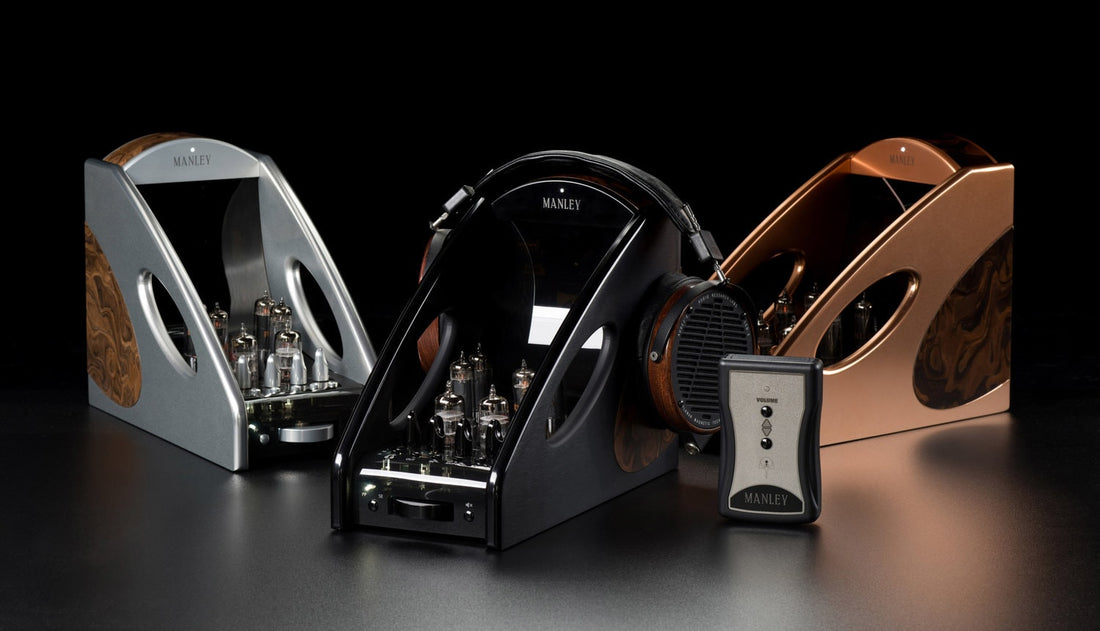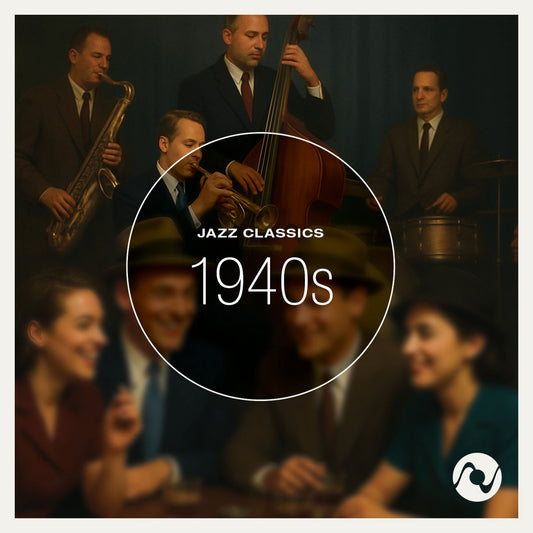In Part One (Issue 129), EveAnna talked about her early musical influences and career, the origin of Manley Laboratories and Vacuum Tube Logic (VTL), and she how she came to be the president of Manley Labs and more. The interview continues here.
Frank Doris: I was going to ask, what makes you decide whether Manley Labs should make a high-end home audio or pro audio product? But you told me (in Part One of the interview) that a lot of your motivation for making new products happened in the mid 1990s after David Manley had left you and the company and you wanted to get back at him and his abusive relationship towards you by making better products than he ever did.
EveAnna Manley: Well, those emotions were fueling my work activity in the late 1990s.
 EveAnna Manley.
EveAnna Manley.FD: I felt a similar thing about turning negativity into creativity, though not from the same circumstances. I‘ve had psoriasis since I was 13 and people would stare at my skin. It made me feel like an outcast. I got angry and frustrated and channeled it into my guitar playing. In my late twenties I realized I wasn’t going to make it in the music business and decided to try my hand at writing.
EM: Who knew? (laughter)
Anyway, that determination fueled me at the time. Today, when we’re deciding what products to work on next, I’ve got a small team. I don’t have a big team, and man, this stuff takes forever to design and get to market. I wish our new designs would come out faster.
We sell about 85 percent pro audio products, and about 15 percent of our sales is consumer hi-fi. We normally have to dedicate our resources in proportion to that reality. Although, we’ve spent the last two years working on brand new high-end [consumer audio] preamplifiers. We sneak in little pro audio projects, like upgrades to the Massive Passive equalizer and VOXBOX channel strip, but we’ve been dedicating a lot of time to these new preamplifiers. One day they’ll be ready.
FD: Let’s talk about tubes. Where do you get them? How do you find good ones? Do you look for new old stock tubes?
 Selecting the right tubes for the application.
Selecting the right tubes for the application.
EM: I think some of those parameters have totally changed over the 30-plus years I’ve been doing this. When I started, the GE (General Electric) factory was still producing 6550s. Chinese tubes were difficult to get because the trade [between countries] wasn’t as open as it is now. The same with Russia. The East and West weren’t really trading partners yet. The GE factory was about to close, and remember, Mullard had closed years before. In 1989 David Manley got in touch with the Yugoslavian EI (Elektronska Industrija) factory. He financed the development of a brand new output tube, the KT90, and he wanted it to be stronger and take more screen voltage than the KT88 or 6550. When I say he developed it, he wasn’t the one who did all the engineering drawings and stuff. He specified and financed it. It was the first new tube to have been made in a while. That was all well and good until the Yugoslav Wars, and then the EI factory ended up closing. Fortunately, Russian tubes became more available at that time, spearheaded by Mike Matthews. FD: The founder of Electro-Harmonix. EM: Oh, thank goodness for Mike. So when we’re looking for new production tubes or working on new products, we’re designing around tubes we can get thousands of, and that’s going to mainly be all the Russian stuff. In the 1990s, you could still find these big batches of NOS and JAN [Joint Army-Navy mil-spec] tubes, and we’d procure 20,000 of this tube and 8,000 of that tube from various suppliers. That kind of stuff’s really dried up. Another thing – there’s a ton of bullsh*t and fraud over this business. FD: And counterfeits. EM: Anyone can clean off the old markings, screen something or acid-etch a new number on a tube, and then you’re buying tubes that have been around the block several times. I remember buying thousands of 6072 tubes. We went through and maybe we used 2,000 of them that were quiet enough for what we needed them for. And then the guy that had sold them to me bought them all back, saying he had a customer for them! They ended up in someone else’s production, but maybe the manufacturer just needs them for cathode followers or something, not for a low-noise application. The same thing can happen to me. I’ve got to be careful if I’m buying a big lot of NOS tubes to make sure they’re not somebody else’s rejects. FD: Some of the stuff I see on eBay… EM: Yeah. It’s like a bottle of wine, dude. You look at some fancy label and think, “ooh la la!” And then after you open it up and drink it, you discover that it’s just swill. Absolute headphone amplifiers.
Absolute headphone amplifiers.
FD: On the other hand, I have NOS tubes from the 1970s that are still good. Some of them have seen hard use in guitar amps. EM: If they’re still good, leave them alone. We had a couple pairs of amps over at Jackson Browne’s studio in Santa Monica. Man, I think he went about 18 years before he replaced those tubes. And they were on every day in an air-conditioned closet, driving his nearfield and his in-wall speakers in the control room. EM: As a consumer, you’ve got to buy tubes from a trusted source. If you’re buying them from the manufacturer of your component, they’ll presumably have tested those tubes for best performance in your piece of gear. FD: Kevin Hayes of Valve Amplification Company once told me you can’t separate the sound of a tube from the circuit that it’s in. EM: He’s right.
 Mahi mono switchable triode/ultralinear power amplifier.
Mahi mono switchable triode/ultralinear power amplifier.
FD: How do you pick the tubes that are good enough for Manley products? EM: We have several purpose-built tube testing fixtures. We have devised custom test procedures for different tubes so that we can maximize usage of these precious resources and try to get the best tube for the job into “that” socket, as different circuits have different requirements for what parameters are key to optimum performance. Every tube goes through burn-in and various stages of pre-qualification before they are plugged into any Manley product. After initial bench testing and alignment, the whole unit goes to bake-in for several days before final calibration and listening. We have burn-in fixtures to accept common 9-pin tubes like 12AX7, 12AT7, 12AU7, 12BH7 etc. and another fixture for 6922 tubes. We can burn-in more than 100 tubes at a time on these jigs.
 Some testing equipment at Manley Labs.
Some testing equipment at Manley Labs.
For differential circuits that demand close triode-to-triode internal matching, we have testing fixtures that step through many tubes during burn-in and ascertain the internal match of the dual-triode. But tubes that fail this test can easily be deployed into single-ended circuits that do not require a triode-to-triode match. We also have power tube soak and bias-match stations that apply fixed negative bias amounts to each output tube, so that a quiescent current draw reading can be taken from that tube in that fixture. Also, importantly, any power tube that an existing customer already has in his Manley amplifiers can be matched to new tubes, as these fixtures have been in use unchanged since the mid-1990s. There are two jigs, one for EL84s and the other for all the octal-based power tubes we use or have used through the years including 5881, EL34, 6550, KT88 and KT90 types. We have a custom-made noise tester that helps us further qualify the common 9-pin small-signal tubes. With this fixture. we have the ability to reverse the triode testing order, starve the heaters to predict a tube’s cathode coating integrity, get a numeric noise level readout, and listen to the quality of the noise and microphonics via the built-in headphone jack. We also have a commercially available Amplitrex tester but we do not use it for production tube testing. FD: Let’s shift gears for a minute. You said your father, Albert J. Dauray, was the co-owner of (musical instrument amplifier manufacturer) Ampeg. I thought Everett Hull was the founder. EM: He was. Dad bought the company from him in ’65 or ’66. I actually have the proposed buyout agreement in my possession. Isn’t that cool? FD: Talk about having roots in tube gear! Everett Hull didn’t like rock and roll. That’s why the early Ampeg amplifiers sound so clean. EM: And dad recognized that he needed to get into rock and roll, which is one of the reasons why later Ampeg amplifiers sounded different. FD: What were your first audio shows like? I remember my first CES. I wore the wrong shoes! It was painful. EM: You have to wear the right shoes at shows! The first audio show I went to was the 1989 Stereophile show up in San Mateo, California. I wasn’t really booked to work the show, but I drove up because I was really interested how things worked. I remember standing in the room and people would come up to ask this little girl a question like, “What tubes are in the 100-watt monoblocks?” And I didn’t know because all I knew was the underside of the thing, from working on it on the production line! I could tell you what the grid resistor was! “Well, just a second. Let me see that. That’s an EL34.” So I started learning an important lesson: I’m not in school anymore. I don’t have to know all the answers in order to pass a test or get a grade. It’s okay to say, “I don’t know. Let me go find out and come back with the answer.” Our booth was amazing. David had set up this big system and he had just bought some master tape collection and was playing them through a Studer tape machine. My next show was the New York Stereophile show the year later, where we had two pairs of big Mirage speakers stacked on top of each other, driven by our giant amplifiers, with the tape machine playing the master tapes, and holy crap! We had infinity Beta speakers at home at the time, and would replicate that kind of big sound we had been getting in the big ballrooms of the hotels where the shows were held. It was awesome. I felt so proud, like, oh my god, the thing I just built can make sound like that!

 Neo-Classic 250 monoblock power amplifier.
Neo-Classic 250 monoblock power amplifier.
I was also learning how to listen critically. Then I started meeting people, like the Chesky brothers [David and Norman Chesky], Chad Kassem of Acoustic Sounds and [former] Stereophile publisher Mark Fisher running around with this walkie talkie trying to organize things.
FD: I really miss all that.
EM: I’m happy not to have to go to shows right now though because we’re so damn busy. We’ve sold so much gear in the past year. Oh my god. We are exhausted. We don’t need any more exposure right now.
FD: I can’t tell you how many people I’ve talked to who are saying they’re busier than ever. They would have never foreseen it.
EM: We had our biggest year ever last year. And we did it with the same number of employees. We just we worked ourselves ragged. A lot of overtime, a lot of 100-hour weeks.
FD: Some have said, maybe last year has proven we don’t need to go to shows anymore.
EM: I disagree. I think all that human contact and networking is important for our sense of community. I’ve always been really big about reaching out to my peers, and we help each other. It’s not like, “ugh, I hate you. You’re going to take my customer.”
FD: I personally think that when we can all go out again, there’s going to be an explosion. Live music, restaurants, shows…people will be thinking, “man, I’ve been sitting here for a year. I’m really interested in buying this VTL or VAC or the ultimate speaker system I’ve been dreaming about and I want to spend the money and go to the show and hear it.”
EM: Well, I hope they buy a Manley! You’re going to give me a big hug when you see me again!



